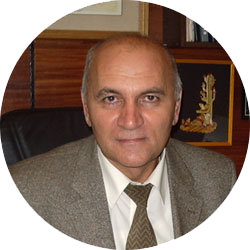USSR Author’s Certificate # 1154930, 1982.
Liakumovich А.G., Bakhir V.M., Lemaev N.V., Alyokhin S.А., Sakhapov G.Z., Kirpichnikov P.А., Grigorovich B.А.
Implementation of the given technological process in industrial conditions does not require costly special adjustments in design and operational technology of commercial pyrolysis furnaces, or unipolar electrochemical treatment of hydrocarbon raw material before its being fed into a pyrolysis furnace in a special industrial high-voltage electrochemical reactor, developing of which is a complicated problem still not solved. The gist of the offered technology is cathodic electrochemical treatment of evaporative liquid, that is, water of mineralization not exceeding 5-7 mg/l at 15-17 kgf/cm2 pressure and temperature over 100 °С, as a result of which its redox potential value is to become at least –600 … –700 mV. Then water with high negative redox potential value is evaporated and the vapor is fed into pyrolysis furnace in full accordance with routinely used technological process.
The result is a considerable increase in the output of ethylene, propylene, bivinyl, and benzene – by 20; 25; 65 and 82 per cent respectively. The given method was tested in practice in pyrolysis furnace at the “Ethylene” plant of the Production Association “Nizhnekamskneftekhim” in 1983. The industrial test results completely confirmed the results earlier obtained in laboratory conditions in experimental pyrolysis plant at the central research laboratory of the Production Association “Nizhnekamskneftekhim”. For industrial tests of the technology, two flow-through electrochemical reactors with concentrically mounted electrodes and a diaphragm were specially built, whose output was 5 tons of cathodically treated water per hour. The reactors’ anodes were rods of dense MPG-6 graphite, 1000 mm long and with 100-mm diameter. The diaphragm made of cement- asbestos pipe with 4-mm thick walls was positioned between the outer electrode – cathode, made of 12Х18Н9Т steel, and anode with 5-mm clearances on both sides of the diaphragm. Voltage fed to the reactor ranged between 600 and 750 V, at current varying from 50 to 80 A, water mineralization being 6 mg/l, temperature – 110-112 °С, and pressure at the electrode chambers of the reactor – 15-16 kgf/cm2 at 0.3 kgf/cm2 pressure differential on the diaphragm.
